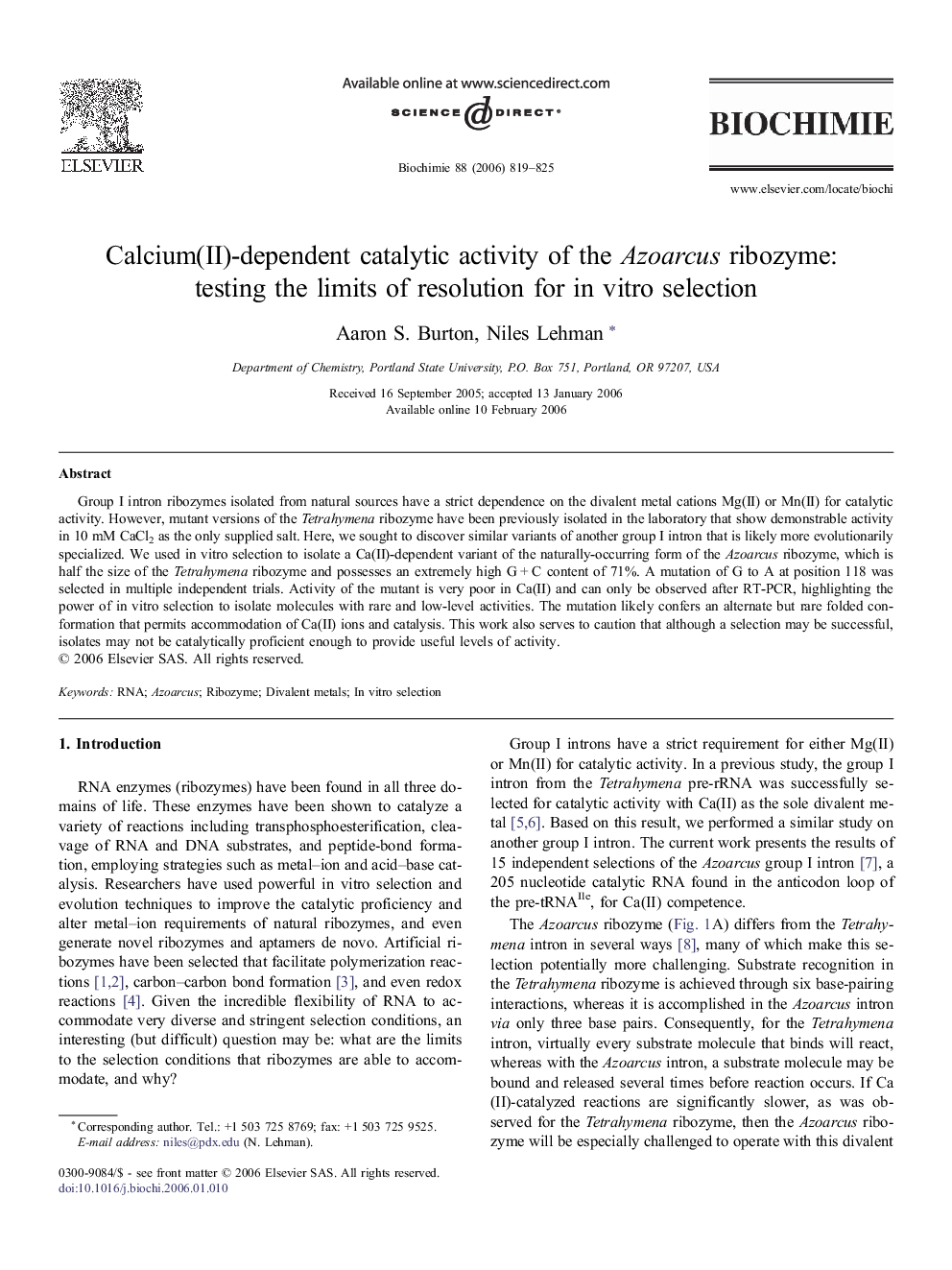| Article ID | Journal | Published Year | Pages | File Type |
|---|---|---|---|---|
| 1953192 | Biochimie | 2006 | 7 Pages |
Group I intron ribozymes isolated from natural sources have a strict dependence on the divalent metal cations Mg(II) or Mn(II) for catalytic activity. However, mutant versions of the Tetrahymena ribozyme have been previously isolated in the laboratory that show demonstrable activity in 10 mM CaCl2 as the only supplied salt. Here, we sought to discover similar variants of another group I intron that is likely more evolutionarily specialized. We used in vitro selection to isolate a Ca(II)-dependent variant of the naturally-occurring form of the Azoarcus ribozyme, which is half the size of the Tetrahymena ribozyme and possesses an extremely high G + C content of 71%. A mutation of G to A at position 118 was selected in multiple independent trials. Activity of the mutant is very poor in Ca(II) and can only be observed after RT-PCR, highlighting the power of in vitro selection to isolate molecules with rare and low-level activities. The mutation likely confers an alternate but rare folded conformation that permits accommodation of Ca(II) ions and catalysis. This work also serves to caution that although a selection may be successful, isolates may not be catalytically proficient enough to provide useful levels of activity.
